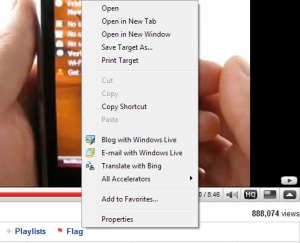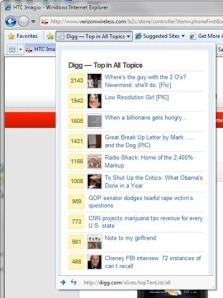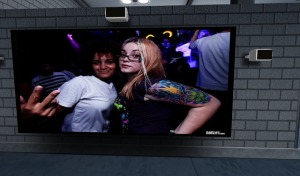My friend had a few questions about digital DJ software. She’s one of those true blue REAL DJ’s. Turntables, cd players, pioneer gear. She’s the kind of DJ that’s stuck with what’s worked well for so many for years. A lot of the worlds best DJ’s are still not digital and for good reason. When your trade relies on your skillset, you shouldn’t really mess around with something that’s been working well for you for so many years. I mean, if DJ’s like Sasha, Digweed, and Laidback Luke are still on cd’s then it stands to reason, that cd’s are still very viable today.
But the allure of just plugging in a laptop and going to work is so compelling. No more lugging around gear. Just show up with your laptop, maybe a midi controller or two and playing with thousands of songs is so appealing. No more need to carry around cd cases to make sure you have every song you need. So many DJ’s are moving digital in this day and age.
But there’s not many guides out there I noticed that specifically cater to someone who really relies on a very set-in-stone workflow; nothing that really compares the two leading DJ software packages for those people. So well… I decided to write one =p.
I’ll be writing this guide under the assumption the DJ already has a mixer, turntables, or cd players. As existing DJ’s will either be used to, own, or have regular access to those things. There are plenty of great guides for everyone else on the net. A great place to start is over at www.djtechtools.com if you find this and find yourself hoping this guide was for beginners or music producers.
Native Instruments Traktor Scratch Pro

Traktor Scratch Pro is the leading DJ software in Europe. It boasts features like stackable effects. But its biggest feature and the bread and butter of the software are it’s quantize and snap features. Some DJ’s call using these features “cheating” as it takes beatmatching off the table. Some newer DJ’s are going as far as to say “beatmatching is dead, sync is the future”. But I’d have to disagree. Especially when considering its not something you can use when beatmatching an 80 bpm track to a 160 bpm track (half and double time mixing). Traktor has great sound quality if you use a really good sound card as well. Now, let’s look at a typical Traktor setup for existing Dj’s who already own gear, or will be showing up at a nightclub that has its own set of cdj’s, turntables, and mixer.
In this setup we see that our DJ will need to show up with the following.
- A laptop
- A soundcard (In this case, and audio 8 DJ which comes packaged with Traktor Scratch Pro)
- Cables
- Possibly a smaller midi controller like the Traktor Kontrol X1 for controlling Traktor’s internal effects as well as managing cuepoints and library navigation without having to work the touchpad or type too much on the laptop.
So during setup. Our DJ shows up at the club with the above in hand. Assuming another DJ is already playing on just the turntables, our DJ will now need to unplug the rca cables from the back of the turntable and one side of the mixer, and plug in cables for them and run them to one side of the soundcard. Now you’ll setup the laptop and soundcard. Get that all settled, put on an mp3 and now the other DJ can pull out of the booth so you can pull the rca cables on the other side and wire the other side into the soundcard. Setup is now complete. Most clubs wont have a a soundcard in house. So this type of scenario is pretty much standard.
Finally lets look at workflow and interface. Here’s a good video of just a random DJ set I found on the net using Traktor Scratch Pro. I tried to shy away from DJ routines as I don’t think they reflect a real world scenario of an actual working DJ’s workflow whatsoever. Not the greatest mix or anything, but I tried to find a good real world example here. Pay close attention to how the waveforms look. These waveforms are something you are going to spend a LOT of time looking at. This DJ is using 1200’s, a mixer, and a Traktor Kontrol X1 to control Traktor’s internal effects and cuepoints.
Moving on….
Serato Scratch Live

Serato is the standard in nightclubs here in the United States. It boasts a very different feature set than Traktor Scratch Pro. It’s popular here in the US because there is a very low cost of upgrade for a nightclub looking to provide a platform for laptop DJ’s. Couple that with “the Serato box” hardware being built by one of the most reliable names in the business. Rane. A nightclub only needs to invest in a Serato box to hook into their exisiting cdj/turntable setup and they’re good to go. They can swap DJ’s all night. Since Serato’s software is freely downloadable from Serato’s website. The clubs DJ’s can literally only spend money on music, organize their crates without Serato hardware connected, and then go to the club, plug in, and play their set.
Here is your typical Serato Scratch Live Setup

The setup workflow would be similar to the Traktor setup above, unless the club already has a Serato compatible Rane mixer like the Rane Sixty Eight or a Serato Box. In those cases, changing DJ’s is as simple as putting a regular record or cd on one deck, mixing it in, then swapping laptops.
Serato Scratch Live also boasts effects, a sample player, allows for music video DJ’ing, as well as “the bridge” which brings Ableton Live integration inside the Serato software itself.

Serato uses colored waveforms. Here’s an explanation of the benefits of colored waveforms and one of Serato’s key selling points. Also, its one of the reasons why “old school” DJ’s tend to go the Serato route.
And finally, here’s a Serato Scratch Live set in action. This DJ is also using a Pioneer effects unit. More importantly than anything else, this example shows both the screen, as well as the DJ’s actual workflow. It should also be noted this mix shows one thing I think Serato handles much better than Traktor. Looprolls. For most Traktor DJ’s, the solution is to use the beatmasher effect. For some, that’s “close enough” but for others, nothing beats a reliable looproll. Again, I shy away from posting “routines” as they don’t in any way reflect a 1-2 hour set that anyone would actually play out at a club or party.
Conclusion
So what should an existing dyed in the wool DJ use today? That’s for you to decide. Everyone resonates differently with different pieces of software. My official recommendation is to buy both, use them back and forth for a month or so and see which one has you DJ’ing most easily. Sell the one you don’t like. Better yet, keep both as a DJ that can use all the tools available to them out there is a better skilled DJ prepared for any situation the real world might throw at them.



